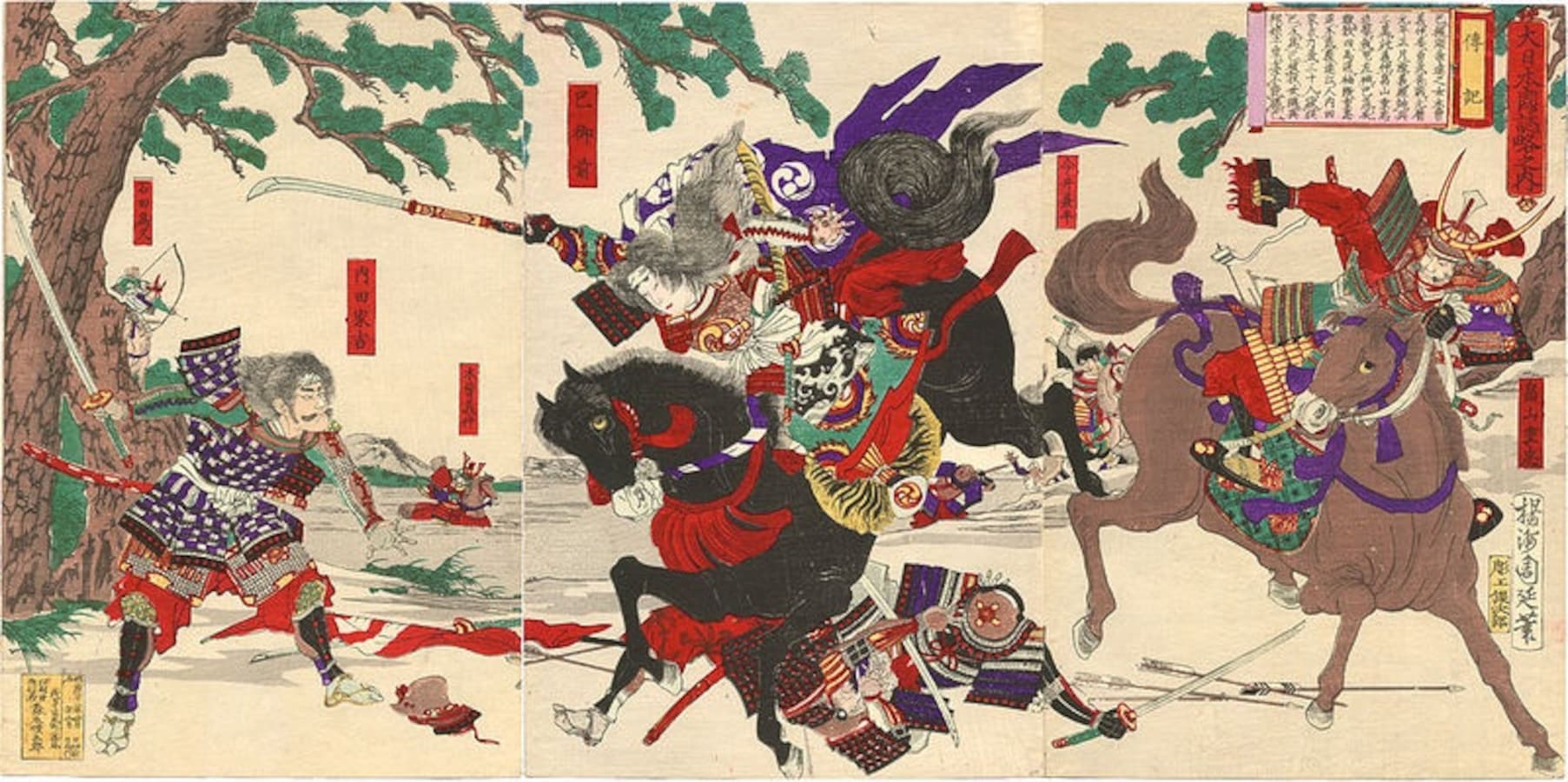James Clavell's Shōgun
James Clavell's novel Shōgun was inspired by a line from his daughter's history textbook, "In 1600, an Englishman went to Japan and became a samurai."

Published in 1975 as part of Clavell's "Asian Saga" (see list below), Shōgun is the fictional account – based on a true story – of the first Englishman in Japan. He arrives in the fateful year 1600, when the Tokugawa shogunate was formed. Clavell was inspired by a line from his daughter's elementary school textbook that stated, "In 1600, an Englishman went to Japan and became a samurai."
Full of swashbuckling adventure, the novel is educational regarding actual Japanese history – but not entirely accurate – and a captivating read. Be forewarned, it is lewd, violent, and full of cuss words entirely worthy of the sailors it portrays. At first, one is tempted to call it horribly culturally insensitive, especially to present-day ears so easily offended, but the historian of Japan Henry Smith, in a welcome set of essays compiled informally for his students, recognized Clavell's true intentions:
I was initially unable to read past the first two hundred pages of Shōgun. Only when pressed by inquisitive students did I read the entire novel and come to understand that the initial image of the Japanese as “barbarians” was a foil for the hero’s eventual understanding that Japan is not only civilized, but maybe even more civilized than the West. In short, the central theme of the novel itself turned out to be exactly our business: learning about Japan.
The main character, John Blackthorne, comes to grudging respect and finally to genuine appreciation of Japanese differences from the West, perceiving even Japan's potentially superior culture.
Blackthorne is modeled after the real-life William Adams (pilot). In fact most of the novel's characters have equally real-life counterparts. Shōgun is a fictionalized account of one of the most fascinating periods in Japanese history, arguably in the history of the world given its portent for global and Asian affairs over the next several centuries. The following list of the novel's characters is matched to their historical counterparts, with Wikipedia links.
- John Blackthorne – Miura Anjin (William Adams) (1564–1620)
- Yoshi Toranaga – Tokugawa Ieyasu (1543–1616)
- Yoshi Sudara – Tokugawa Hidetada (1579–1632)
- Yoshi Naga – Matsudaira Tadayoshi (1580–1607)
- Ishido – Ishida Mitsunari (1559–1600)
- Ochiba – Yodo-dono (1569–1615)
- Yaemon – Toyotomi Hideyori (1593–1615)
- Onoshi – Otani Yoshitsugu (1558–1600)
- Harima – Arima Harunobu (1567–1612)
- Kiyama – Konishi Yukinaga (1555–1600)
- Sugiyama – Maeda Toshiie (1539–1599)
- Zataki – Matsudaira Sadakatsu (1560–1624)
- Toda Mariko – Hosokawa Gracia (1563–1600)
- Toda Hiro-matsu "Iron Fist" – Hosokawa Fujitaka (1534–1610)
- Toda Buntaro – Hosokawa Tadaoki (1563–1646)
- Toda Saruji – Hosokawa Tadatoshi (1586–1641)
- Kasigi Yabu – Honda Masanobu (1538–1616)
- Kasigi Omi – Honda Masazumi (1566–1637)
- Goroda – Oda Nobunaga (1534–1582)
- Nakamura – Toyotomi Hideyoshi (1536–1598)
- Akechi Jinsai – Akechi Mitsuhide (1528–1582)
- Lady Genjiko – Oeyo (1573–1626)
- Martin Alvito – João Rodrigues (1561/1562–1633/1634)
- Johann Vinck – Jan Joosten van Lodensteijn (1556?–1623)
- Spillbergen – Jacob Quaeckernaeck (?–1606)
- Father Dell'Aqua – Alessandro Valignano (1539–1606)
- Brother Michael – Miguel Chijiwa (1569?–1633)
- Captain-General Ferriera – Horatio Neretti, captain of the Black Ship in 1600
(Source)
Many of the samurais contained in this list of the Twelve Most Famous Samurais lived during the period in question, including Oda Nobunaga, Toyotomi Hideyoshi, and Tokugawa Ieyasu. William Adams himself is even given an honorable mention.

Over the next few days I'll post more about the fatual historical backdrop of this famous novel. Fiction, like travel, provides a fascinating and accessible entrée into world history.
In the end, Clavell had a simple if defiant explanation for Shōgun’s success: ''It was a crackerjack story.'' (Source)
For reference, here are Clavell's "Asian Saga" books, arranged in chronological order according to plot, not publication date.
Ordered by internal chronology:
1 Shōgun: set in feudal Japan, 1600. 1152 pages.
2 Tai-Pan: set in Hong Kong, 1841. 727 pages.
3 Gai-Jin: set in Japan, 1862. 1126 pages.
4 King Rat: set in a Japanese POW camp, Singapore, 1945. 400 pages.
5 Noble House: set in Hong Kong, 1963. 1171 pages.
6 Whirlwind: set in Iran, 1979. 1147 pages (Abridged with some rewritten parts as Escape, 598 pages)
Source: Asian Saga



